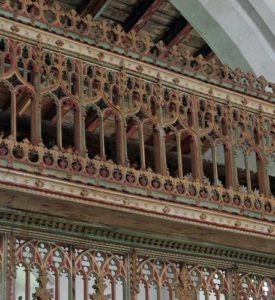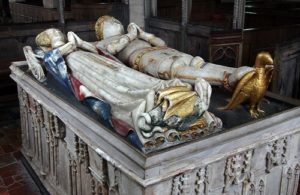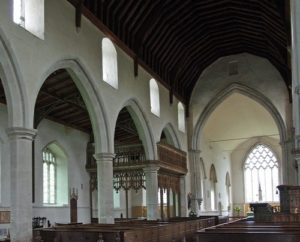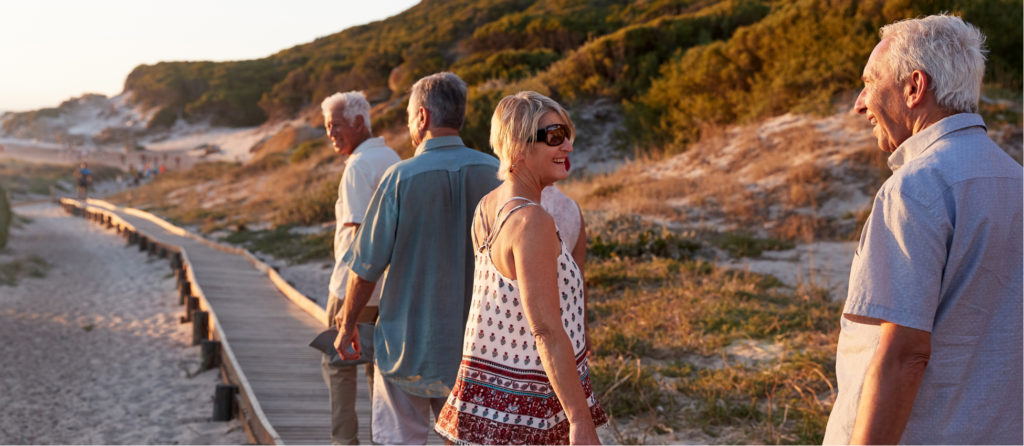St Mary’s is a timeless flint built church in the centre of the village. It has a big buttressed tower with north west tower giving access to the bells. The clerestory nave has been rendered and has a shining metal roof. The flint side aisles and chancel are lower. The north porch has a flushwork border round the base and the aisle buttresses have decorative flushwork.
Although the church dates back to the 12thC, the chancel, most of the nave and tower were built in the early 14thC with side aisles added later. The porch is 15thC and inside is a massive oak doorway.
It escaped the Victorian restorations. Inside it feels a big church. It is light and airy with plenty of light flooding in through the plain glass windows. There are slender octagonal pillars with pointed arches separating nave and side aisles. It has a simple wood beam roof. Traces of paint can be seen on the side aisle roofs.
At the back of the nave are 15thC pews with poppyheads and carved ends with animals, bird and mythical beasts. Unfortunately many have been damaged either during the Reformation or by the Iconoclasts during the Commonwealth. Nearer the chancel are box pews which were used by the gentry.
At the back of the church is a 15thC font with 16thC cover painted blue with small gold motifs. The 16thC pulpit was later converted into a three decker pulpit with a readers desk in front. The two wooden boards on the north wall list charitable gifts.
There is a simple pointed arch into the chancel with a table altar under the east window. The side windows in the chancel have narrow side pillars with carved capitals with small carved heads at the base of the arches. There is an old chest gently collapsing. On the floor are tomb stones, now minus their brass. There is a single seat sedilia on the south wall which continues as a bench under the later window. There is an aumbry and piscina beyond.
The north chancel chapel is surrounded by a splendid parclose screen, complete with loft above. This is a rare survival. The base panels are painted in reds and blues. The delicate tracery is painted in browns, reds, oranges and blue. It is very beautiful. The chapel is reserved for private prayer and has a simple table altar and more 15thC benches.
The Bardolph tomb in the south chantry chapel is surrounded by the base of a carved and painted parclose screen which has metal spikes around the top. On top are beautifully carved alabaster effigies of Sir William d 1441 and his wife. He is wearing armour, picked out with gold. His feet rest on a gilded eagle. His wife has a blue and red painted cloak. Her feet have a wyvern with gilded wings. William was chamberlain to Henry VI, a hero of Agincourt and Harfleur and a knight of the garter.
On the wall above is a fine 17thC monument to the Rous family with two kneeling figure with a skull on the wall above them. Pillars support a canopy with shields above.
This is another nice church with some splendid wood carvings and one of the best an almost complete parclose screens. The church is open daylight hours and there is parking in a small layby by the entrance to the church.










